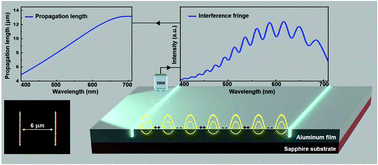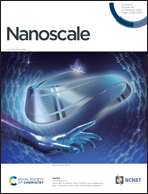Low-loss aluminum epitaxial film for scalable and sustainable plasmonics: direct comparison with silver epitaxial film†
Abstract
Aluminum is a plasmonic material well known for its excellent stability, complementary metal–oxide–semiconductor compatibility and wide availability as compared to popular plasmonic materials such as gold and silver. Aluminum can support surface plasmon resonances in a broad spectral range, including the deep ultra-violet, a regime where no other plasmonic materials can work. However, conventional aluminum films suffer from high losses in the visible region and low fidelity and reproducibility in nanofabrication, making aluminum plasmonics non-ideal for applications. Herein, we report the experimental results of consistent surface plasmon propagation length measurements for epitaxially grown aluminum and silver films (epifilms), using three different methods (white light interferometry, laser scattering and spectroscopic ellipsometry) in the full visible spectrum. In order to avoid losses caused by inferior material quality, we used single-crystalline aluminum and silver films for direct comparison. We found that, on directly comparing with the silver epifilm, the aluminum epifilm possesses reasonably long plasmon propagation lengths in the full visible range and outperforms silver in the deep blue region. These results illustrate the great potential of epitaxial aluminum films for visible-spectrum plasmonic applications, resulting from their superior crystallinity and excellent surface and interface properties.

- This article is part of the themed collection: Advances in Plasmonics and Its Applications


 Please wait while we load your content...
Please wait while we load your content...